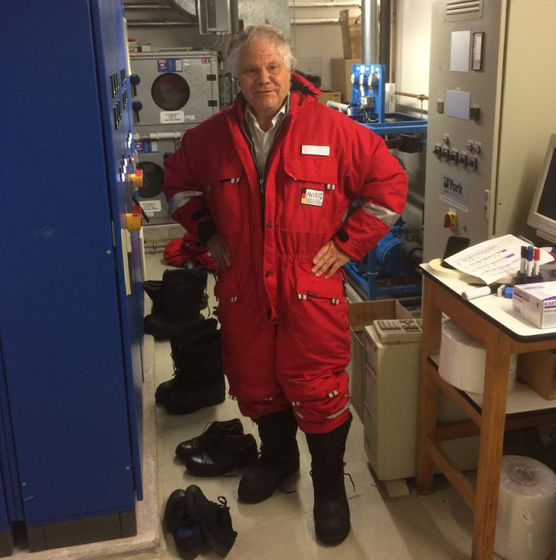An ancient ``zombie virus'' that has been sleeping in permafrost for 50,000 years wakes up in the hands of scientists

by Jean-Michel Claverie/IGS/CNRS-AMU
Research teams from France, Russia, and Germany have announced that they have successfully isolated and revived the virus from 48,500-year-old permafrost in the Arctic. In this study, scientists who discovered a total of 13 new viruses under the ice said, ``If the ice melts due to the progress of climate change, there will be more opportunities for humans to come into contact with unknown pathogens.'' I'm ringing the alarm bells.
Viruses | Free Full-Text | An Update on Eukaryotic Viruses Revived from Ancient Permafrost
Scientists revive 'zombie' virus that was trapped for 48,500 years in the Arctic's permafrost | Euronews
https://www.euronews.com/next/2023/03/09/scientists-revive-zombie-virus-that-was-trapped-for-48500-years-in-the-arctics-permafrost
Viruses in permafrost: Scientists have revived a 'zombie' virus that spent 48,500 years frozen | CNN
https://edition.cnn.com/2023/03/08/world/permafrost-virus-risk-climate-scn
Permafrost, which occupies a quarter of the northern hemisphere, is rapidly declining due to global warming in recent years, and there are concerns that two major threats will emerge from beneath the ice. The first is that the organic matter trapped in the permafrost decomposes, releasing huge amounts of carbon dioxide and methane gas, further accelerating climate change. And the second is the resurrection of ancient viruses and bacteria that were dormant in the ice.
In 2014, a research team led by Jean-Michel Clubry and Chantal Abergel of the University of Aix-Marseille in France discovered an ancient giant virus ` ` Pithovirus ' ' from permafrost 30,000 years ago. In addition to successfully reviving it, in 2015 another giant virus called ' Mollivirus' was discovered from permafrost.
Crabley at work at the Alfred Wegener Institute in Potsdam, Germany.

by Jean-Michel Claverie
In a new paper published in February 2023 in the academic journal Virus, the research team led by Crabley and others, who have continued to study ancient viruses, found that from samples collected in seven locations of permafrost in Siberia, The research team reported that they discovered many new viruses called 'zombie viruses'.
Seven of the 13 new viruses found this time are Pandoraviruses, the oldest being
In addition to Pandoravirus, the research team has discovered viruses belonging to a total of five phylogenetic groups: Cedratvirus, Megavirus, Pacmanvirus, and Pisovirus, 27,000 years ago. The pysovirus found in mammoth hair was a new species different from the previous one.
Pictures of Pandoravirus (A and B), Cedratovirus (C), Pisovirus (D), Megavirus (E), and Pac-Man virus (F) found this time.

It is worth noting that the research team selected and revived only viruses that infect single-celled amoebas for safety. Mr. Crabley told CNN, an overseas media, ``The amoeba-infecting virus found this time seems to be the tip of the iceberg from the whole virus hidden in permafrost. also found a great many traces of the virus, and it is not confirmed whether those viruses are still alive, but it is said that if the amoeba virus is still alive, so are the other viruses. It is our reasoning that there is no reason why it does not have the ability to infect
There have already been reports of pathogens sleeping under the ice threatening modern life. For example, in 2016, at least 20 people were diagnosed with anthrax and 2,350 reindeer died in an outbreak in Siberia caused by anthrax spores that were believed to have been present in thawing permafrost. .
In the paper, the research team said, ``We do not yet know how long the virus found this time can maintain its infectivity, nor how likely it is to be infected by contact with a suitable host. However, permafrost The risk will only increase in the face of accelerated volcanic thaw, increased populations living in the Arctic due to industrial development, and accelerated global warming.' .
Related Posts:
in Science, Posted by log1l_ks







